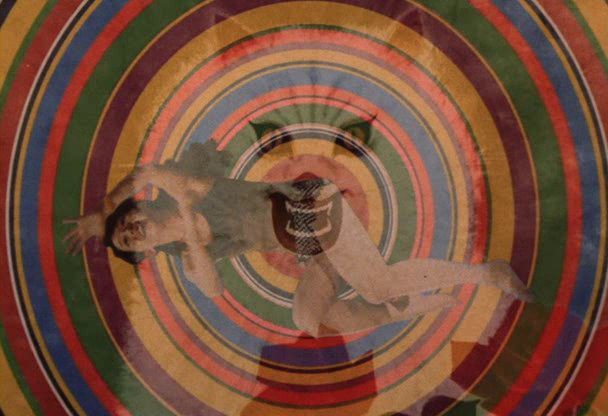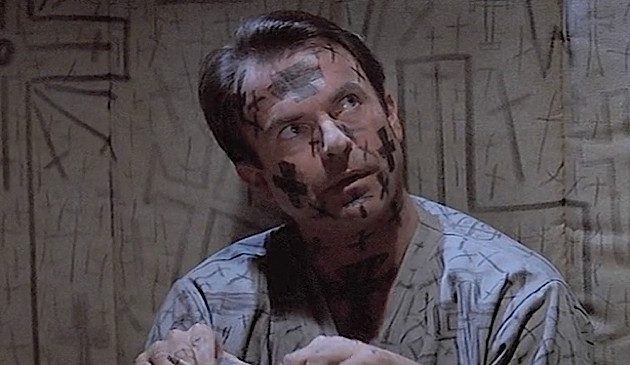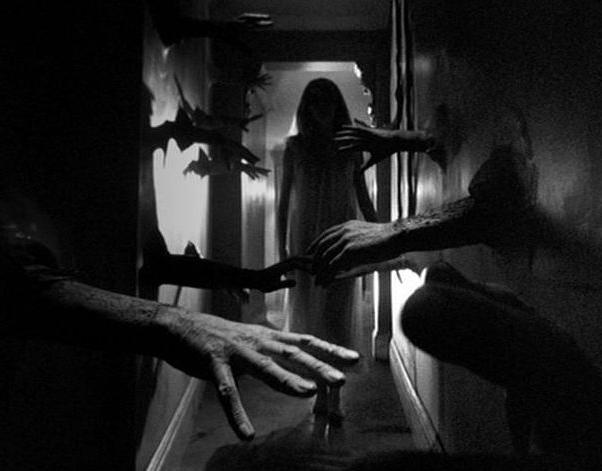Horror Movies are one of the most diverse genres in film, featuring various subgenres such as slasher, psychological horror, and horror-comedy (a blend of humor and horror or surreal/experimental horror). This genre has always been popular, which is why today we see many horror films of questionable quality flooding the market. In stark contrast to the mindless jump scares and excessive gore of many mainstream productions, the best horror films delve deep into the psychological complexities of characters, showcasing haunting imagery and profound thematic depth that leaves viewers with unsettling realizations.
Below is a list of the top 10 best surreal horror films of all time. Some of these works are genuinely bizarre and may disturb the viewer, but if you can get past the sharp edges of their outer appearance, you will surely appreciate the profound truths that the directors conceal within.
10. Tetsuo: The Iron Man (Shinya Tsukamoto, 1989)
This short film, running for 77 minutes, is marked by its bizarre narrative and frenetic energy. It tells the story of a man who transforms into a “metal creature” after being hit by a car, leading to a descent into madness where he becomes a grotesque amalgamation of man and machine. The haunting imagery and industrial soundscapes of Japanese cinema contribute to its status as a classic in the realm of surreal horror.
9. House (Nobuhiko Obayashi, 1977)
“House” is not just an ordinary haunted house film; it combines surreal visual effects and whimsical storytelling that create an increasingly bizarre atmosphere. The plot follows a group of schoolgirls who enter a haunted house filled with traps and supernatural horrors, leading to a uniquely mind-bending experience. Its quirky narrative and surreal imagery make “House” a standout piece of cinema.
8. Possession (Andrzej Zulawski, 1981)
In Andrzej Zulawski’s classic horror film, actor Sam Neill plays Mark, a secret agent in a tumultuous marriage. As he follows his wife, he uncovers a horrifying secret that challenges the very nature of his existence. The film’s unique approach to storytelling, combined with surreal and violent imagery, makes “Possession” a psychological horror masterpiece that cannot be overlooked by genre enthusiasts.
7. The Serpent and the Rainbow (Wes Craven, 1988)
A lesser-known masterpiece by horror maestro Wes Craven, yet it remains one of the most innovative horror films of the 1980s. The film revolves around voodoo practices and the supernatural, featuring nightmarish sequences that leave a lasting impact on viewers. Particularly memorable are the hallucinatory scenes following the use of a voodoo drug, solidifying its reputation as a cult classic.
6. The Cabinet of Dr. Caligari (Robert Wiene, 1920)
As one of the first horror films in history and a significant milestone in the development of German Expressionism, “The Cabinet of Dr. Caligari” is a must-see for anyone interested in film history due to its outstanding visual design. The film’s use of distorted sets and unique angles creates an unsettling atmosphere, using shadows to convey horror and evoke deep emotions. Even if you’re not a fan of the horror genre, the artistic merit of this film is undeniable.
5. Santa Sangre (Alejandro Jodorowsky, 1989)
“Santa Sangre,” or “Holy Blood,” is a surreal horror masterpiece by director Alejandro Jodorowsky. The story traverses the line between reality and the surreal through the main character Felix, who is haunted by the memory of his mother’s death. The film employs striking imagery to explore this bizarre narrative. If you appreciate an unexpected ending and enjoy the “surreal” aspect, this film is definitely for you.
4. In the Mouth of Madness (John Carpenter, 1995)
In the hands of legendary Hollywood horror director John Carpenter, this film contains a psychological complexity that distorts reality, leaving viewers to question what is real and what is not. The main character, John Trent, is a private investigator hired to investigate the disappearance of famous horror author Sutter Cane, leading him to uncover horrifying truths. Carpenter’s bold filmmaking style, combined with Sam Neill’s stunning performance, makes this film a crucial entry in the horror genre.
3. Repulsion (Roman Polanski, 1965)
The film centers around Carol, a manicurist living in London who becomes increasingly unhinged after her sister goes missing. The film explores her descent into madness, showcasing her violent behavior as she struggles with her fears. “Repulsion” creates a haunting atmosphere through its exploration of psychological trauma and the character’s disturbing relationship with men. It offers insight into the marginalized role of women in society during that era.
2. Eraserhead (David Lynch, 1977)
Upon its release, “Eraserhead” faced controversy from critics, but over the decades, audiences have come to appreciate its unique artistic style. The film follows Henry Spencer, a struggling man living in an industrial wasteland who discovers that his girlfriend is pregnant, leading to the birth of a creature that resembles a monster. The film’s unsettling imagery and haunting soundscapes create a surreal experience that is both disturbing and captivating.
1. Suspiria (Dario Argento, 1977)
In the 1970s, Italian horror master Dario Argento gained fame with his slasher classic “Deep Red,” but with “Suspiria,” he took his craft to an extraordinary new level. Unlike any previous work, “Suspiria” is a surreal horror film filled with vibrant colors and haunting visuals that rival psychological dramas. The plot revolves around Suzy, a young American woman who travels to Germany to attend a prestigious dance academy, only to discover that the institution harbors dark secrets.
After a series of bizarre and violent events unfold, she realizes that the academy is a front for something sinister, threatening the lives of students and staff alike. The film’s stunning choreography and vibrant cinematography, combined with Argento’s brilliant score, create an unforgettable emotional experience for viewers. “Suspiria” remains one of the finest surreal horror films ever made.
Source: Tasteofcinema































